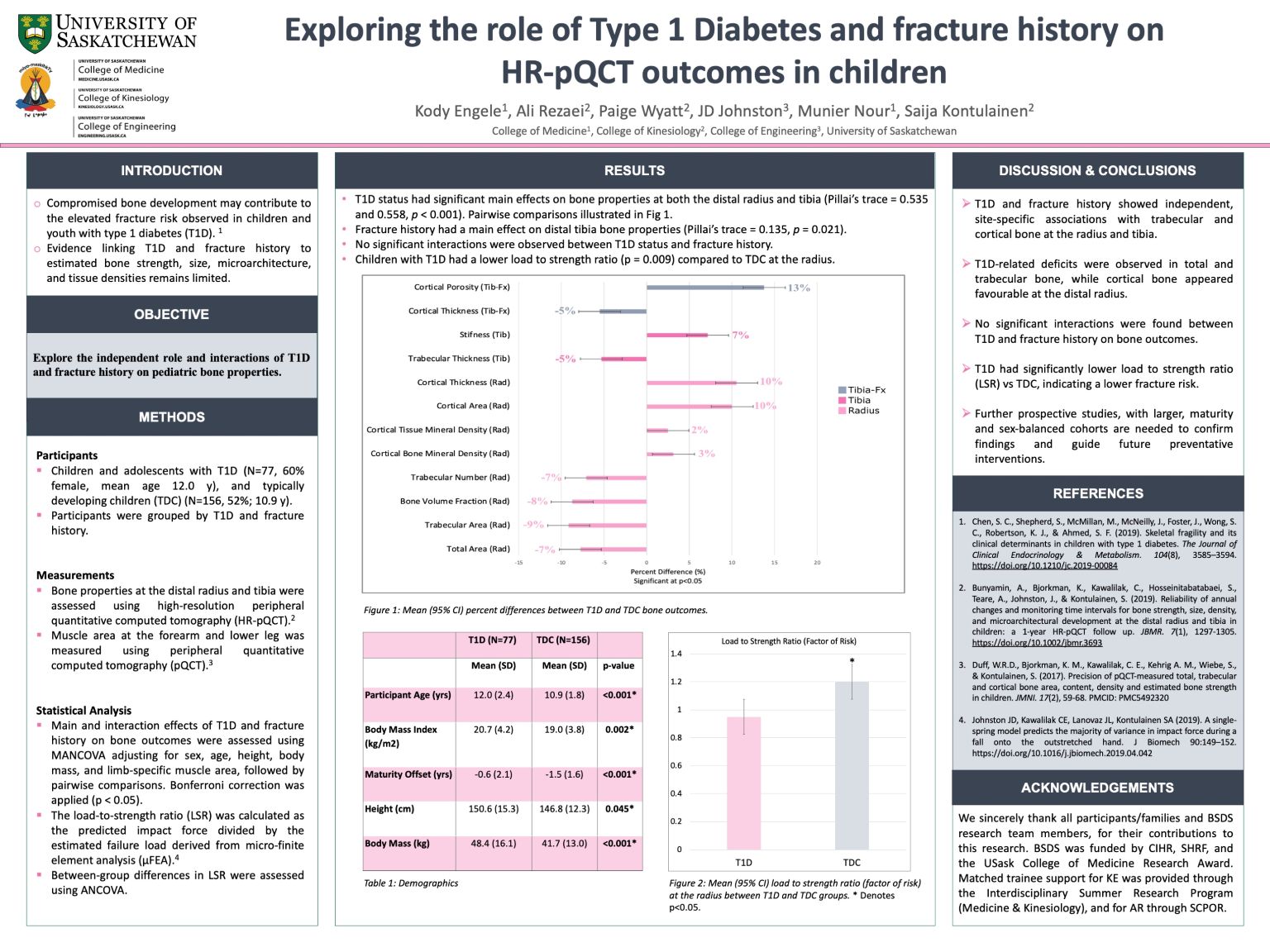
Exploring the role of Type 1 Diabetes and fracture history on HR-pQCT outcomes in children
Kody Engele
Compromised bone development may contribute to elevated fracture risk in pediatrics with type 1 diabetes (T1D). Evidence linking T1D and fracture history (FxHx) to bone properties remains limited. We explored the roles and interactions of T1D status and FxHx on pediatric bone properties, T1D(n=77, 60%female; mean12.0 y) and typically developing controls(TDC; n=156, 52%; 10.9 y). Grouped by T1D and FxHx: Bone properties were assessed using high-resolution peripheral quantitative computed tomography. Factor of risk was calculated. We examined main and interaction effects of T1D and FxHx on bone outcomes using MANCOVA with Bonferroni (p <.05). T1D had significant main effects on bone properties at both the distal radius and tibia (V=0.535 and 0.558, p< 0.001). FxHx had a main effect on distal tibia (V=0.135, p=0.021). No significant interactions were observed. At radius, T1D had 7–9% lower total and trabecular and 3%-14% higher cortical bone outcomes. At distal tibia, T1D had 5% lower trabecular thickness and 7% higher stiffness. FxHx had 6% lower cortical thickness and 14% higher cortical porosity. T1D had lower load to strength ratio (p=0.009) compared to TDC. T1D and FxHx showed independent associations with trabecular and cortical properties. Prospective studies are needed to confirm findings and guide interventions.
